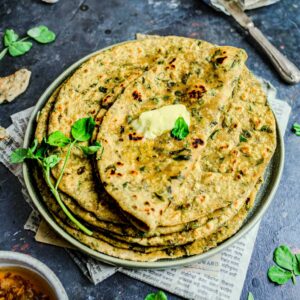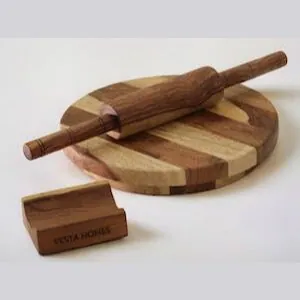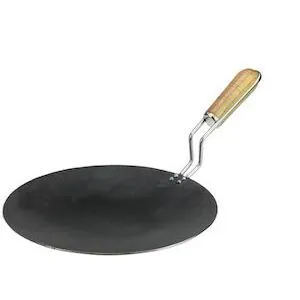
Methi Paratha Recipe
Methi paratha is a healthy flatbread made with fresh fenugreek leaves, garlic, and spices. It's soft, buttery, and easy to make.
Ingredients
- 80 g fresh fenugreek leaves methi, 80g is about 1 average bunch
- 340 g stone-ground chapati flour chakki atta
- 2 cloves garlic finely minced
- ⅛ teaspoon turmeric powder
- ½ teaspoon cumin powder
- ½ teaspoon ajwain seeds
- 270 ml warm water
- ½ tablespoon oil
Instructions
- Prepare 80 g fresh fenugreek leaves. Wash it thoroughly, pick the leaves from the stems, and then roughly chop.*
- In a parat, combine 340 g stone-ground chapati flour with chopped methi, 2 cloves garlic (minced), ⅛ teaspoon turmeric powder, ½ teaspoon cumin powder, and ½ teaspoon ajwain seeds (crush these between your palms before adding). Gradually add 270 ml warm water and knead the dough by pressing it with the palm of your hand and pushing it forward. Knead until the dough is soft. Cover with a damp cloth and let it rest for around 10 minutes.
- Separate the dough into 8 equal sizes, and roll each into a smooth ball. Take one ball and dip it into a small bowl with extra chapati flour. Place it onto the rolling board and flatten it with your palm. Take an Indian rolling pin and gradually start to roll the paratha into a circle. As a beginner, use slow, even movements and roll in only one direction. Turn the paratha and roll in that direction. Repeat this until your paratha are about 8" in diameter.
- Heat the tawa over medium heat. Add a drizzle of neutral oil. Using your hands, brush off any excess flour from the paratha (traditionally, this is done by "throwing" the paratha between your hands), then place it on the tawa. Cook until the bottom has changed colour, then flip the paratha and cook the other side, applying more oil to the edges. You'll want ½ tablespoon oil.
- Repeat this process for the remaining paratha. While you cook the parathas, you can store the finished ones in a pile (they should retain their heat) or use a chapati warmer.
Notes
*If the methi is overly bitter, you can soak it in hot salted water for 10 minutes.
Nutrition
Serving: 1gCalories: 193kcalCarbohydrates: 32gProtein: 5gFat: 5gSaturated Fat: 1gPolyunsaturated Fat: 2gSodium: 129mgFiber: 5gSugar: 1g
Tried this recipe?Please consider leaving a review!

